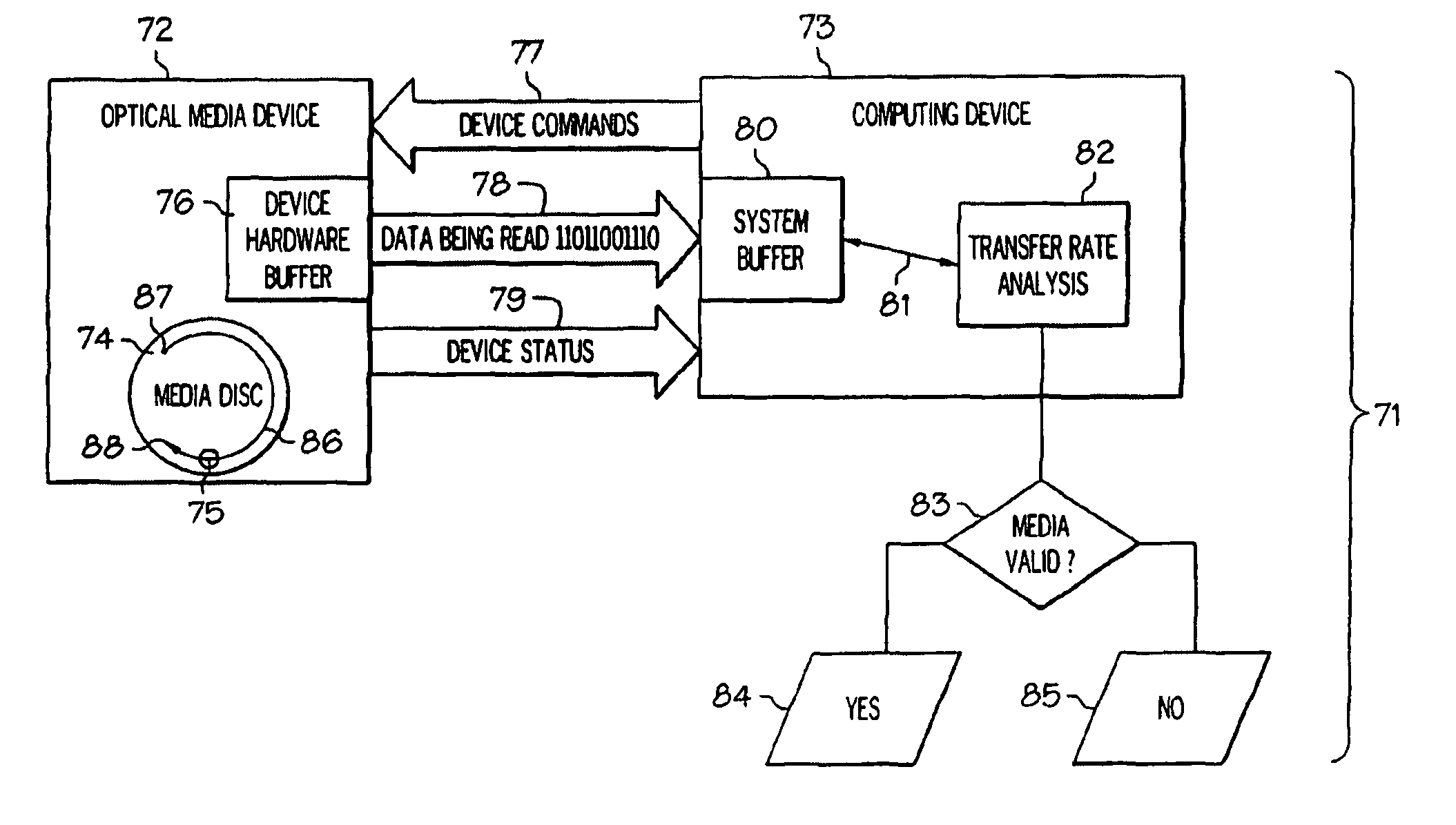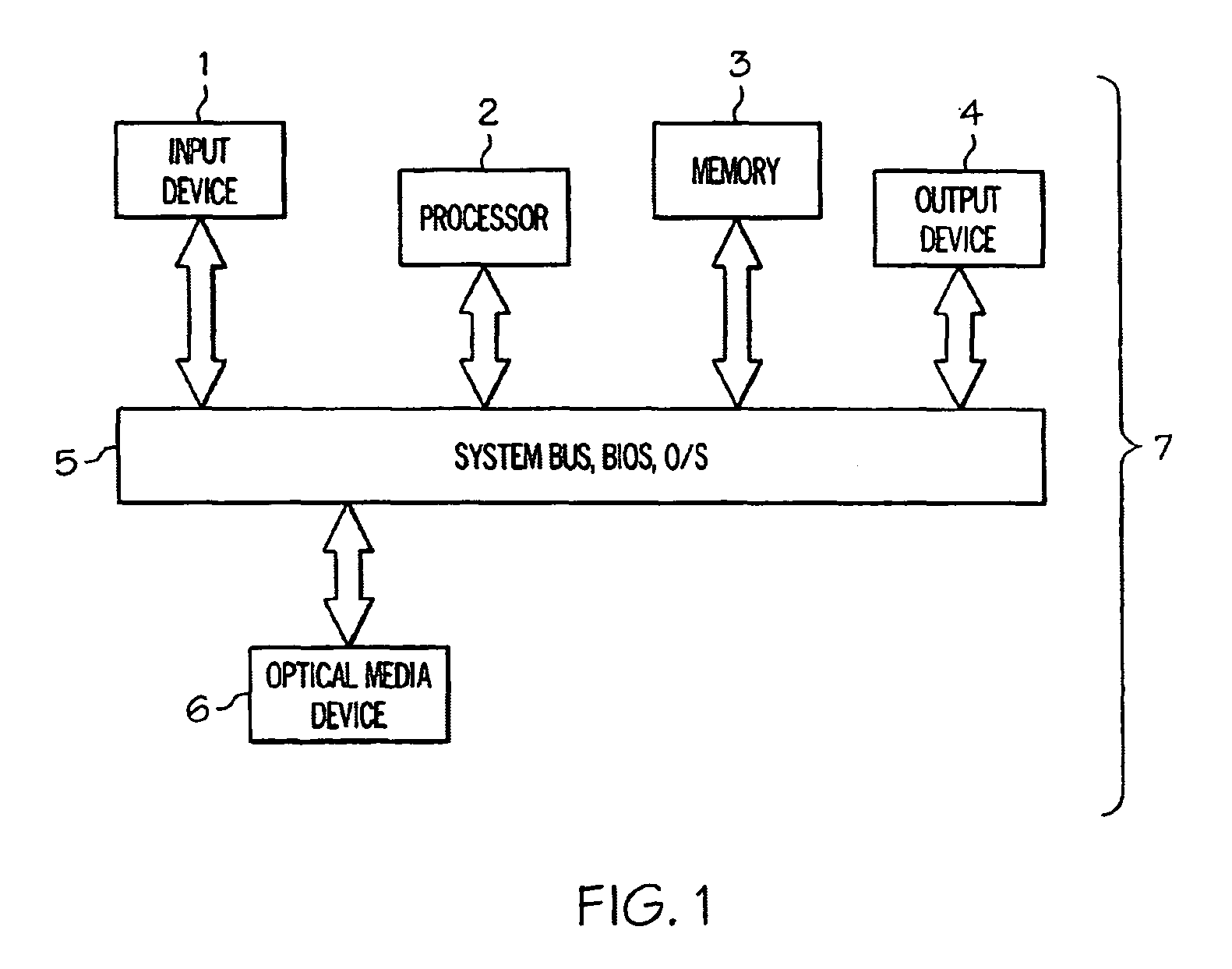Systems and methods for media authentication
a technology of media authentication and authentication methods, applied in the field of system and method authentication for digital information, can solve the problems of inability to accurately reproduce inability to generate recoverable, and inability of copying devices and associated software to adequately replicate such marginally readable anomaly regions. to achieve the effect of accurately inferring the actual performance and status of the devi
- Summary
- Abstract
- Description
- Claims
- Application Information
AI Technical Summary
Benefits of technology
Problems solved by technology
Method used
Image
Examples
example 1
[0096]
Example Pseudocode (A):AnomalyDetect(DriveId, StartBlock, EndBlock){ DetectorInitialize(DetectorData); SignatureInitialize(Signature[1]); DriveConn = OpenConnectionToDrive(DriveId); For CurrBlock = StartBlock to EndBlock { CurrBlockData = ReadBlock(DriveConn, CurrBlock); SaveDetectorData(DetectorData, CurrBlockData, BlockSize); SignatureUpdate(Signature[1], CurrBlockData, BlockSize); } SignatureFinalize(Signature[1]); ** Run the standard detection algorithm ** DetectorResult = RunStandardAnalysis(DetectorData); ** Only run the signature test if the results from ** ** the standard detection algorithm are inconclusive ** If (DetectorResult = ResultInconclusive) { For Pass = 2 to 4 { SignatureInitialize(Signature[Pass]); For CurrBlock = StartBlock to EndBlock { CurrBlockData = ReadBlock(DriveConn, CurrBlock); SignatureUpdate(Signature[Pass], CurrBlockData, BlockSize); } SignatureFinalize(Signature[Pass]); } ** If any two signatures are the ** ** ...
example 2
[0098]
Example Pseudocode (B):AnomalyDetect(DriveId, StartBlock, EndBlock){ DetectorInitialize(DetectorData); SignatureInitialize(Signature[1]); DriveConn = OpenConnectionToDrive(DriveId); For CurrBlock = StartBlock to EndBlock { CurrBlockData = ReadBlockMethodA(DriveConn, CurrBlock); SaveDetectorData(DetectorData, CurrBlockData, BlockSize); SignatureUpdate(Signature[1], CurrBlockData, BlockSize); } SignatureFinalize(Signature[1]); ** Run the standard detection algorithm ** DetectorResult = RunStandardAnalysis(DetectorData); If (DetectorResult = ResultInconclusive) { DetectorInitialize(DetectorData); SignatureInitialize(Signature[2]); For CurrBlock = StartBlock to EndBlock { CurrBlockData = ReadBlockMethodB(DriveConn, CurrBlock); SaveDetectorData(DetectorData, CurrBlockData, BlockSize); SignatureUpdate(Signature[2], CurrBlockData, BlockSize); } SignatureFinalize(Signature[2]); ** Run the standard detection algorithm ** DetectorResult = RunStandardAnalysis(Detecto...
PUM
| Property | Measurement | Unit |
|---|---|---|
| specific rotation rate | aaaaa | aaaaa |
| rotation rate | aaaaa | aaaaa |
| refraction | aaaaa | aaaaa |
Abstract
Description
Claims
Application Information
 Login to View More
Login to View More - R&D
- Intellectual Property
- Life Sciences
- Materials
- Tech Scout
- Unparalleled Data Quality
- Higher Quality Content
- 60% Fewer Hallucinations
Browse by: Latest US Patents, China's latest patents, Technical Efficacy Thesaurus, Application Domain, Technology Topic, Popular Technical Reports.
© 2025 PatSnap. All rights reserved.Legal|Privacy policy|Modern Slavery Act Transparency Statement|Sitemap|About US| Contact US: help@patsnap.com



